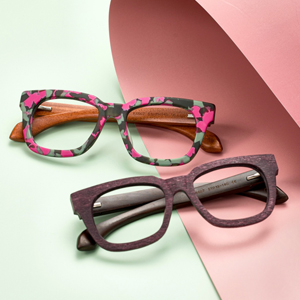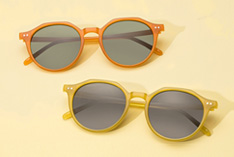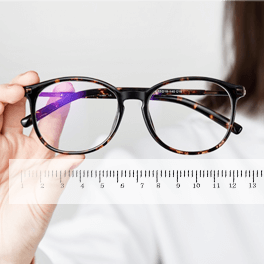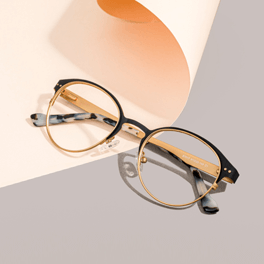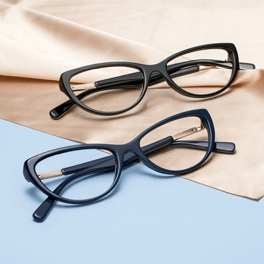FAQ
Quick Links
Find Your Fit
Step 1: Read the Measurements Printed on the Frame and Measure the Frame
The best place to pick up a new perfect fit is to start with the measurements printed on your current glasses or measure your current glasses if they fit well.
*Click our 'Quick Links' - 'Measure Your Frame' to measure your current glasses.
Step 2: Identify Your Face Shape and Find the Suitable Frame Style and Shape
If you have trouble identifying you face shape, you can get these measurements and check what face shape you have.
• Forehead Width: Measure your forehead at the widest point (from left hairline to another).
• Cheekbone Width: Measure the distance across your face to the same spot on the other side (from your hairline above your cheekbone).
• Jawline Width: Measure your jawline at the widest point (about 1 inch down from your ears).
• Face Length: Measure your face length (from the middle of your hairline to chin).
When your forehead width is similar to cheekbone width and face length.
1.Pointed Jawline: Oval face shape
2.Boxy Jawline: Square face shape
3.Rounded Jawline: Round face shape
When your forehead is slightly wider than your cheekbone, and its width is shorter than its length.
1.Pointed Jawline: V-Triangle face shape
2.Soft Curved Jawline: Heart face shape
3.Boxy Jawline: Rectangle face shape
4.Rounded Boxy Jawline: Rounded Rectangle face shape
5.Rounded Jawline: Oval/Long face shape
When your forehead is narrower than your cheekbone, and its width is shorter than its length.
1.Pointed Jawline: Diamond face shape
2.Boxy Jawline: Triangle face shape
3.Rounded Jawline: Oval/Long face shape
Face Shape & Frame Shape/Style
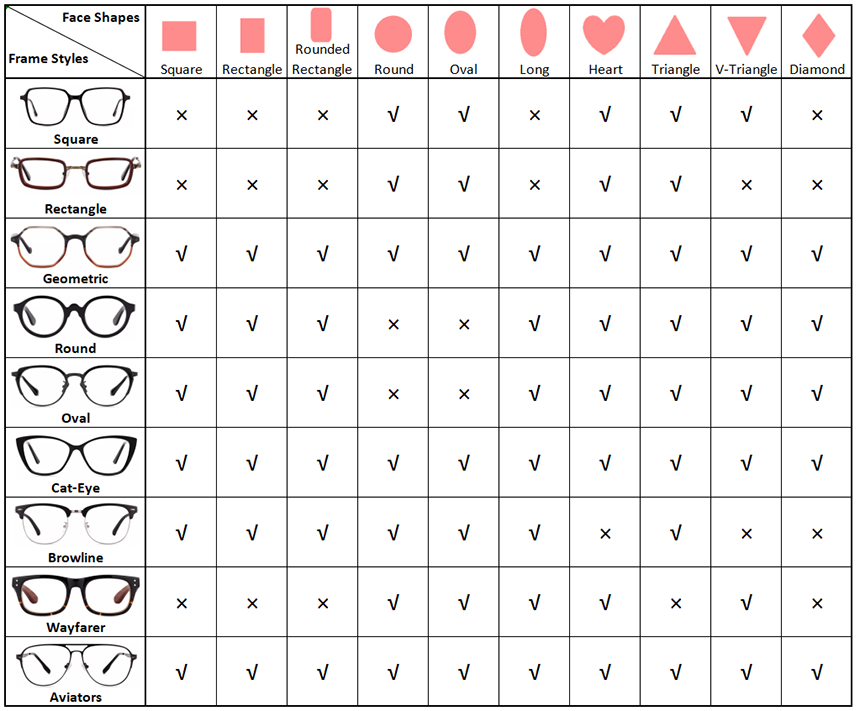
Step 3: Search the Perfect Fit due to the Measurements You Got
On the frame page, you can find the FRAME SIZE section under the DESCRIPTION and SPECIFICATIONS sections. Compare your current glasses with the one you select on the site.
Opticians usually suggest that you keep the lens size within 2 mm of your current frame (unless you are intentionally choosing an over-sized style), within 2 mm of your current bridge size, and within 5 millimeters of your current frame's temple length.
1.Find the Perfect Frame Width
A glasses frame that is too narrow will make your face look wider, while a wide glasses frame will make your face look too narrow. Your perfect fit should be slightly wider than your face - no more than a finger's breadth (3/4 of an inch or 19 mm) between the temple and your face.
If your current frame doesn't fit well, stick with the 'one finger-breadth' rule when selecting frames.
2.Get Cozy with the Temple Arm
The temple should fit horizontally and evenly along your face and fit comfortably along the outside of your ear.
If you select a frame with longer temples than your current ones, you may have a problem with glasses sliding down your nose.
3.Pick the Right Lens Height and Width
Lens height and width indicate the size of lenses. Your eyes should be directly in the center of the lens, from left to right, and fill the top half of the lens. The bottom of the eye should roughly touch the vertical midpoint of the lens.
If the lens size is too big, it may cause you vision issues (blurry vision, headache) with the glasses. The bottom frame rim may touch your cheeks as well. The most important is that the lens would be thicker than the smaller frame, especially with a strong prescription.
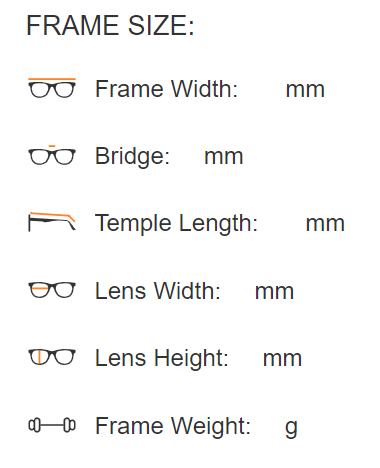
4.Select the Ideal Bridge Width
The bridge of your glasses should sit stably and comfortably against your nose. If your PD (the distance between the centers of your pupils) is small (less than 60 mm), the ideal bridge width is a lower number (no more than 18 mm). Otherwise, a higher number is better.
If you have a low nose bridge, the frame with adjustable rubber nose pads is recommended.
If you have a high nose bridge, the frame with fixed nose pads is recommended.
You can calculate the frame PD comparing to your PD to check if the frame will sit properly on your face: Frame PD = Lens Width+Bridge Width. (the difference no more than 10 mm)

